War is the organized use of violence between independent political groups. Since the dawn of civilization, there have been many kinds of wars. International wars involve the use of force between countries. Civil wars are violent conflicts between political communities within the same country. Violence between a government and a substantial opposition group within the country is called a violent rebellion or revolutionary war. Cold wars are struggles conducted through diplomatic, economic, and psychological means but not through direct force.
Throughout history, wars have caused great suffering and hardship. Many international organizations work to prevent wars from occurring and to resolve them quickly once they start.
Why wars occur
Most wars result from a combination of causes. Three of the most common causes are conflicts over resources, clashing ideologies, and struggles over power.
Conflicts over resources
are the most basic and enduring causes of war. Resources include land, minerals, energy sources, and important geographical features. The field of geopolitics examines the importance of geography and territory to a country’s identity, wealth, and behavior.
Examples of conflicts over resources are numerous. In the Crimean War (1853-1856), the United Kingdom, France, and the Ottoman Empire fought against Russia for control of the area around the Black Sea. The Persian Gulf War of 1991 resulted from Iraq’s attempt to seize control of Kuwait’s oil reserves. 
Clashing ideologies
can also lead to war. Ideologies are sets of ideas that define different communities. Religious teachings are often central to a society’s ideology. Sometimes, these teachings are different from—or even openly hostile toward—those of other communities. In these cases, religious wars can erupt. From 1096 to the late 1200’s, for example, Christians from Europe waged war on Muslim rulers in Palestine as part of the military expeditions known as the Crusades .
Ideological conflicts can also involve political concepts. An example of such a conflict was the Cold War between Communist and non-Communist nations in the latter half of the 1900’s. The conflict between capitalist democracy and Communism fueled the tensions between the United States and the Soviet Union. Loading the player...
Berlin Wall
Struggles over power.
Power involves the ability to control other people or to control the outcome of a situation. War often results when one country seeks to expand its power at the expense of others. In some cases, a decline in the strength of a powerful nation may prompt a war of opportunity, in which rival nations try to take advantage of the once powerful nation’s weakened state. In other cases, one or more nations may act together to stop the increasing power of a rival country. The ancient Greek historian Thucydides described the Peloponnesian War (431-404 B.C.) in terms of power. As the power of Athens grew, he said, other cities joined together to stop it. Although power may be valued for its own sake, both resources and ideologies are closely connected to power.
Waging war
Wars are complex events that involve the preparation of large numbers of soldiers and the involvement of much equipment and weaponry. Large wars place extreme stress on a society’s population and economy. Several factors influence a nation’s ability to wage war.
Population
plays an important role in war operations. A country must have a large supply of young people to fight in its military. When people leave to fight in a war, others must step in to replace them in the national economy. People are injured and killed in wars, and a country may rapidly reduce its best human resources. In some civil wars and violent rebellions, troops have kidnapped young people and forced them to fight as child soldiers.
Industrial and financial resources
are also important to a war effort. Soldiers in the field need weapons, ammunition, supplies, equipment, and protection. Supplying and equipping a modern army requires a great deal of money. For centuries, rulers borrowed money to pay for their wars. The result, however, was usually an enormous debt owed by the government. Today’s governments have broad powers to collect taxes and so are better able to pay for wars out of tax revenue. Revolutionary movements or terror groups cannot raise taxes. They might get support from friendly governments or turn to illegal activities, such as the sale of drugs or stolen artifacts (artistic or historical objects).
Information and intelligence.
Learning an enemy’s secrets can be crucial to success. Espionage is the act of acquiring information through spying. Modern technology allows for much better communication between commanders and troops, but it also creates opportunities for espionage. During World War II (1939-1945), for example, U.S. intelligence experts broke the Japanese military code, which enabled them to surprise and destroy most of the Japanese fleet in the Battle of Midway .
Today, computers and other information technologies influence all aspects of warfare. They are important tools in strategic planning, weapon design, and satellite surveillance of territories and troops around the world.
Organization and control
are crucial in conducting an efficient war effort. Military organizations are typically hierarchical—that is, they consist of levels of higher and lower ranks. In modern democracies, the top military leaders take direction from civilian political leaders, who provide the strategic goals of the war effort. In other systems of government, the military may cooperate less with political leadership. In some cases, the military itself is a nation’s political leadership. These militaries often are less restrained in their use of force.
Ethical and legal aspects of war
Beginning in the Middle Ages, scholars and statesmen began to think seriously about the moral and legal aspects of waging war. Roman Catholic theologians developed a concept of just war to describe circumstances where war could be fought without breaking Christian rules against killing. Modern legal considerations originated with the Peace of Westphalia, at the end of the Thirty Years’ War (1618-1648). This treaty between European nations established individual countries’ rights to territory and self-government.
The basic rules of warfare.
There are certain behavioral guidelines that combatants should obey during times of war. Violations of these rules are called war crimes. The rules of warfare apply in three main areas.
First, nonfighting civilians should be treated differently from military and political leaders and combat troops. Militaries should try to minimize the amount of harm done to civilians.
The second area involves the treatment of prisoners of war. In the modern era, prisoners should receive humane treatment. They should be safe from torture, arbitrary killing, and other cruel acts. When hostilities end, prisoners should be returned home.
The third area addresses the use of weapons. Several international treaties prohibit the use of specific kinds of weapons during war. These mainly include chemical and biological weapons. The use of nuclear weapons is highly controversial, but some countries refuse to promise that they will never use these weapons.
Changes in the rules of war
have occurred mostly in the 1900’s. War crimes issues were central to the Hague Conventions of 1899 and 1907 and the Geneva Conventions of 1864, 1906, 1929, 1949, and 1977.
In World War II, Nazi Germany exterminated millions of European Jews and other people whom Adolf Hitler regarded as racially inferior or politically dangerous. These actions prompted new legal concepts of crimes against humanity. The most serious crime against humanity is genocide , the deliberate and systematic mistreatment or extermination of a national, racial, religious, or cultural group. Other crimes against humanity include using civilians for slave labor or for inhumane medical experiments. These new concepts developed during trials of surviving Nazi leaders at Nuremberg, Germany. 
International Criminal Court.
New cases of mass killing continued to occur. They took place in Cambodia (1975-1979), Rwanda (1994), Bosnia-Herzegovina (1995), and other places. In 2003, the International Criminal Court (ICC), established by the United Nations (UN) at The Hague, the Netherlands, began operation. The goal of the ICC is to bring the leaders responsible for acts of genocide, crimes against humanity, and war crimes to justice when national courts are unable or unwilling to do so. However, the work of the court is hampered by the fact that it has no police powers of its own. The ICC must depend on the governments of its members to carry out arrest warrants. Because of this and other limitations, some serious crimes have gone unpunished.
How wars end
Wars can end in several different ways. Traditionally, the side with the greatest military power wins, but, in some cases, a militarily “weaker” side can gain an advantage. Wars often end with negotiated settlements that seek peaceful relationships between nations.
Superior force and resources
typically determine the winner of a war. In some cases, the losing side is virtually crushed or taken over by the overwhelming victors. In the third Punic War (149-146 B.C.), for instance, Rome destroyed the city of Carthage and took survivors as slaves.
Popular support.
A persistent smaller opponent may not win a war outright, but it may prevent the stronger side from winning. One of the most important resources that a militarily weaker side can possess is the commitment and support of its people. During the most intense periods of the Vietnam War (1957-1975), the United States had vastly superior military resources but unsteady public support. As a result, the U.S. government withdrew troops and negotiated a peace agreement.
Stalemates.
When parties in a war are evenly balanced, the sides may fight to a stalemate (draw). A negotiated settlement, bargained directly or through a third party, can result. The settlement may not differ much from the conditions that existed before the war. For instance, during the war between Iran and Iraq (1980-1988), neither side could gain a lasting advantage. After eight years of fighting, the two countries reached a truce that restored the original conditions.
A stalemate can also result in a more beneficial settlement. During the 1980’s, El Salvador experienced a violent internal war between socialist guerrillas and the conservative government. In 1992, the parties negotiated an arrangement that set the country on the path toward democracy.
Effects of war
Wars have many long-lasting consequences. Some of the most important include the loss of life, the rise of some nations and the collapse of others, the creation of refugees, and lingering scars and hatred.
Loss of life
is the most dramatic consequence of war. A major war can leave thousands dead and many more wounded. World War I (1914-1918) killed about 9 million soldiers. World War II caused more than 20 million military deaths, and even more civilian deaths. Even after a war has ended, people may continue to die as a result of it. For example, abandoned land mines are particularly dangerous in such countries as Cambodia and Angola, where thousands remain buried in fields and near roads. 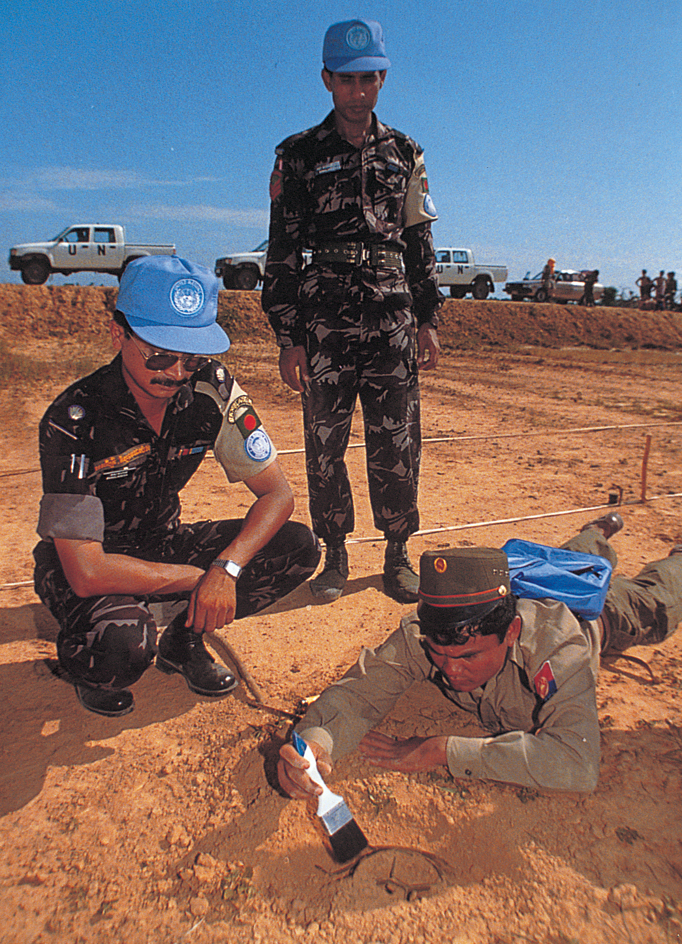
The rise and collapse of nations.
Victory in war can establish new world powers. Defeat can cause nations to collapse. New countries can also develop in the aftermath. As a result of World War I, for instance, the United States emerged as the most powerful country in the world; the Austria-Hungary, Ottoman, and Russian empires collapsed; and new countries, such as Czechoslovakia, Turkey, and Yugoslavia, were created.
Refugees
are a common consequence of war today. Civil wars frequently cause mass migrations of civilians as they try to escape violence. Some refugees remain inside their own country. Often, however, they cross borders, placing demands on the receiving countries and international aid agencies. Both world wars created millions of displaced people and refugees. In the 2000’s, the UN estimated that by the end of 2016, the Syrian civil war had internally displaced 6 million civilians and caused 4.8 million more to seek safety outside the country.
Scars of war.
Individuals, especially children, bear the scars of war in many ways. Soldiers’ deaths create orphans and widows. Adults may suffer disabling physical injuries. Additionally, people who experience or witness extreme violence in wartime may develop emotional or psychological problems. Warring groups also experience lingering anger and hatred.
Preventing war
Philosophers and diplomats have sought ways to prevent war for centuries. Some proposals have called for the transformation of governments into types less inclined to go to war. Other proposals have suggested new ways to structure relationships between nations.
The League of Nations.
World War I prompted the creation of an international organization called the League of Nations . The League sought to give its members collective security, in which the security of each member would be guaranteed by the protection of all. In principle, wars between League members would be avoided by the pledge that all member nations would respond to an attack on any one member. The League proved too weak, however, to stop the rising aggression of such countries as fascist Italy, Nazi Germany, and imperial Japan in the years leading up to World War II.
The United Nations.
The destruction of World War II brought government officials together once again to form a new international organization, the United Nations. The UN formed a Security Council of the world’s major powers aimed at preventing wars or stopping them quickly. 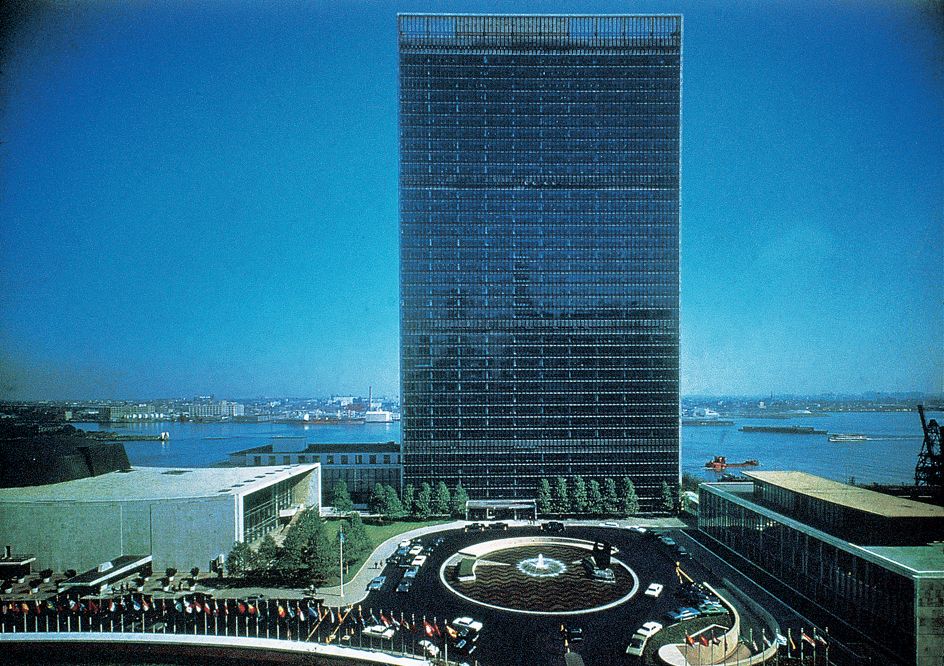
The UN’s first major challenge came when the United States and the Soviet Union became involved in the Cold War. Although the two countries did not fight directly, their ideological differences caused them to take part in smaller conflicts in other parts of the world. The UN’s attempts to prevent war were therefore frustrated.

Today, the UN’s war prevention efforts continue to have mixed success. In 1991, 39 nations joined a UN effort led by the United States to free Kuwait after it was occupied by Iraq. The UN also provided assistance in the settlement of civil wars in Angola, El Salvador, and Guatemala. However, the UN and other organizations were unable to contain the Syrian civil war or the simultaneous conflict with the terrorist group Islamic State (also called ISIS).
The history of warfare
Ancient times.
Most scholars believe that warfare emerged in human history between 8000 and 6000 B.C. At that time, the development of settled agricultural civilizations created both riches and scarcity. Some people accumulated wealth that they wanted to protect, and others attempted to take that wealth from them. Families fought against families, and tribes fought against tribes. Warrior social classes and armies formed to protect wealth and to expand into new areas. Warfare was common in ancient Greece and Rome, where political units called city-states competed for power. Each city-state was independent, consisting of a city and the region surrounding it. Soldiers fought these wars with weapons that typically included swords, shields, and spears. For centuries, war remained relatively unchanged.
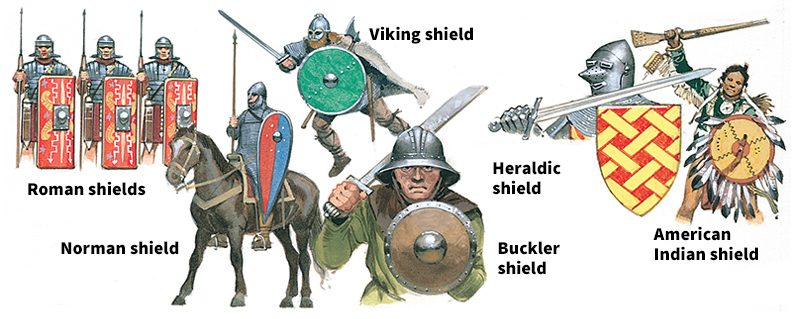
Technological advancements
eventually shaped the ways of war. In medieval Europe, rulers created fortified cities and castles to defend their domains. Rivals developed tools for the destruction of defensive walls. Sometimes, innovations in arms or organization allowed smaller armies to defeat larger ones. For instance, at the Battle of Agincourt (1415), a small English army used its trained archers to defeat a much larger French force.
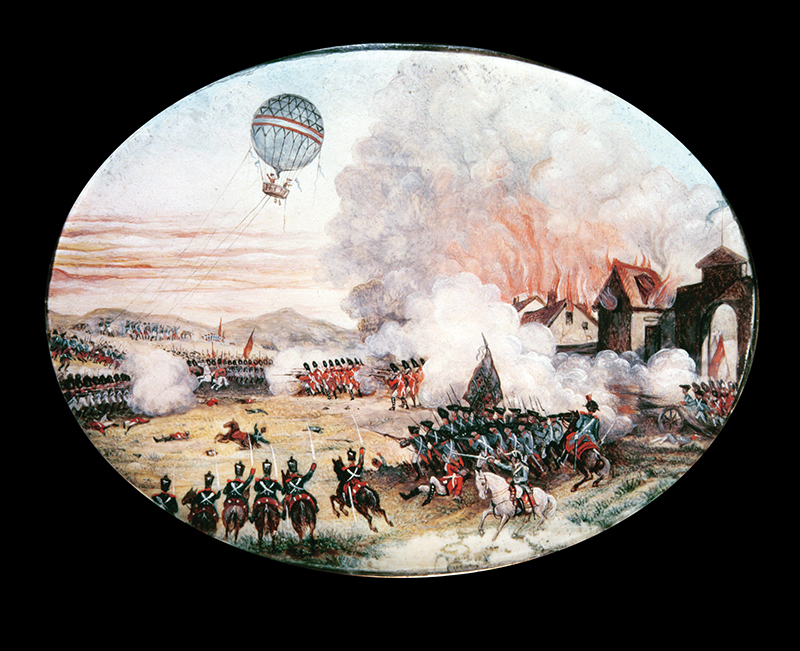
By the 1400’s, Europeans began using firearms. The power and range of guns and cannons dwarfed those of older weapons. European conquests in the Americas, Africa, and Asia after 1500 offer vivid examples. Small bands of Spanish conquistadors (conquerors) defeated large armies in Central and South America. In North America, the huge technological advances of Europeans led to the defeat of scattered Native American societies.
The Industrial Revolution of the 1700’s and 1800’s further changed the face of warfare. Rifles with remarkable accuracy replaced muskets. New techniques of industrial production and transportation enabled large armies to receive better supplies and to move more quickly. Additionally, mass production enabled armies to equip more soldiers than ever before.
The world wars.
In World War I , nations moved large numbers of troops to the battlefronts by train and steamship. Each side used long-range cannons to bombard enemy troops. The improved technology of the rapid-fire machine gun helped soldiers to guard positions more effectively. The destructive technologies of each side were evenly matched, however, and thousands of soldiers died in single battles.
By World War II , the warring nations made extensive use of two innovations from World War I, the airplane and the submarine. Aircraft allowed nations to fight from greater distances and to destroy targets without the use of ground troops. The Allied nations largely destroyed such cities as Dresden, Germany, and Tokyo, Japan, with air attacks. German submarines sank hundreds of troop and cargo ships in the Atlantic Ocean.
World War II also saw the invention and first use of nuclear weapons. The United States dropped atomic bombs on the Japanese cities of Hiroshima and Nagasaki, destroying most of each city. 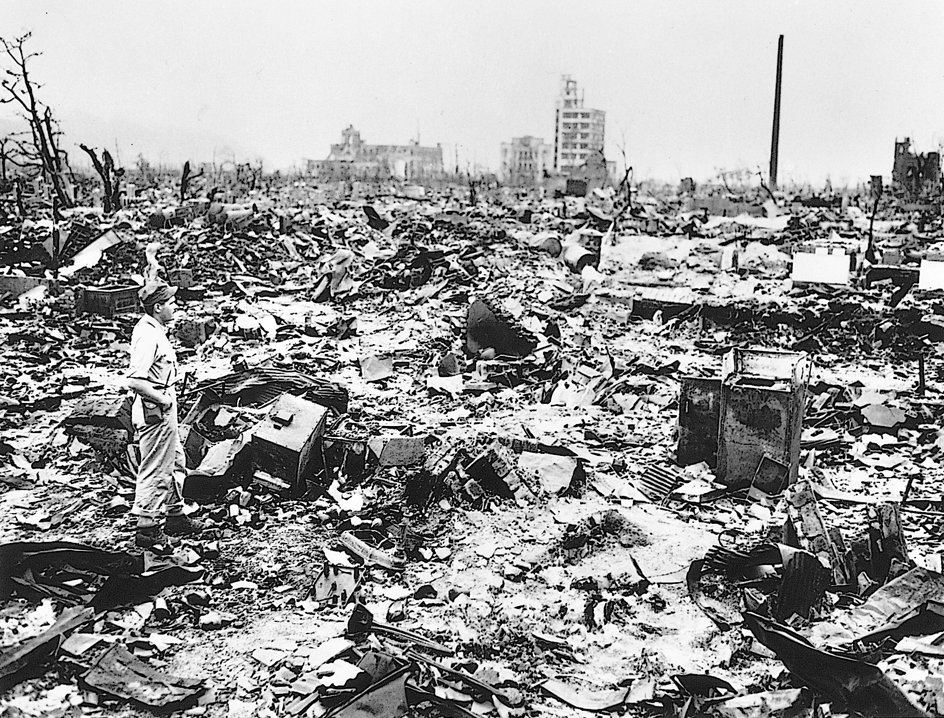
The Cold War era.
The power of nuclear weapons dramatically transformed warfare. As the Cold War between the United States and the Soviet Union intensified, each country rushed to build more powerful weapons. But by the early 1960’s, both nations had reached a point of nuclear deterrence. They recognized that a war between them would most likely result in two losers and no winner. As a result, an actual war between the two countries never broke out. In 1991, the Soviet Union—the world’s most powerful Communist country—broke up into a number of independent states.
The war against terrorism.
On Sept. 11, 2001, terrorist attacks in the United States killed about 3,000 people. United States President George W. Bush called the attacks “acts of war.” The United States formed an international coalition and led a military campaign against international terrorist groups operating in Afghanistan and other nations. Because terrorist networks are secretive and widespread, this conflict lacked most of the features of conventional warfare between nations. Terrorist groups break up, and new groups emerge within and across many countries. The groups use a combination of low-tech violence to kill and high-tech communication to promote their mission and recruit new members. 
The Iraq War.
In March 2003, a U.S.-led coalition began military action against the Iraqi regime of Saddam Hussein. American officials argued that Hussein’s government supported terrorist organizations and was concealing weapons of mass destruction. The coalition’s invasion of Iraq led to the fall of Hussein’s government in April. Combat operations ended in August 2010, and the Iraq War officially ended in December 2011. 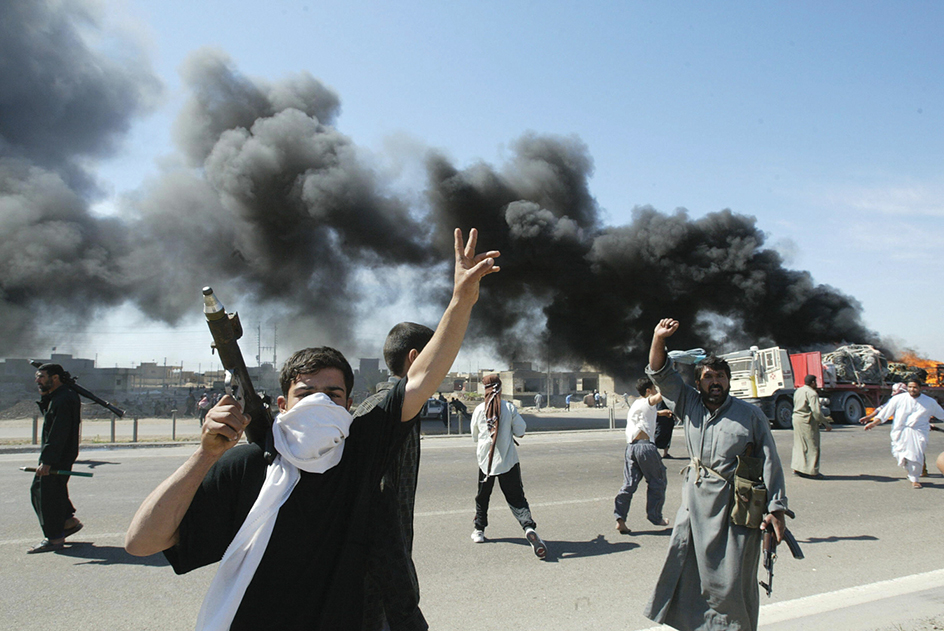
Recent developments.
Today, most wars are fought within countries, not between them, and most are conflicts between ethnic communities. The largest, most technologically advanced countries form a zone of peace. The Syrian civil war illustrates the complexity of warfare today. The war began in 2011 as an internal conflict between groups seeking to overthrow the government. One of the groups was the terrorist organization Islamic State. By 2016, ISIS controlled significant cities and territory in both Syria and Iraq. Turkey and several other neighboring countries aided some of the Syrian opposition forces. Iran and other nations helped the Syrian government. The United States and Russia actively supported opposite sides.
Nuclear weapons remain a danger among nations involved in conflicts with their neighbors. Many people also fear that dictatorial leaders or such nongovernmental organizations as terrorist groups could use nuclear weapons. 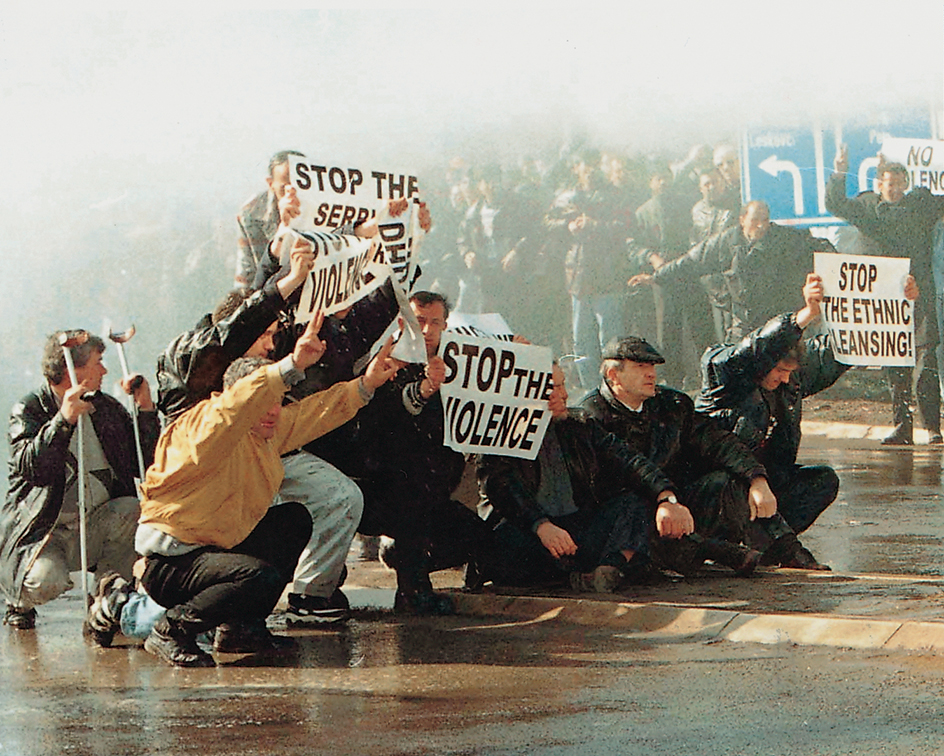
Technological advances have made war by “remote control” more effective and appealing to government leaders. The United States and its allies in Iraq have increasingly used unmanned aerial vehicles (drones) to attack targets, as well as for surveillance.
Among the new forms of war emerging is cyberwar—that is, war through computer-based attacks. The rapid expansion of computer networks linking business, government, civilian, and military organizations has created new vulnerabilities. Both military installations and weapons testing can be disrupted by planting malicious computer viruses inside an opponent’s systems.
